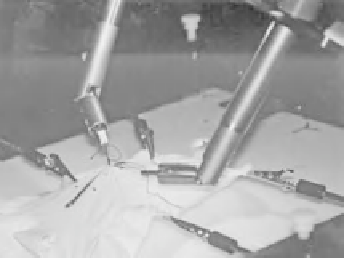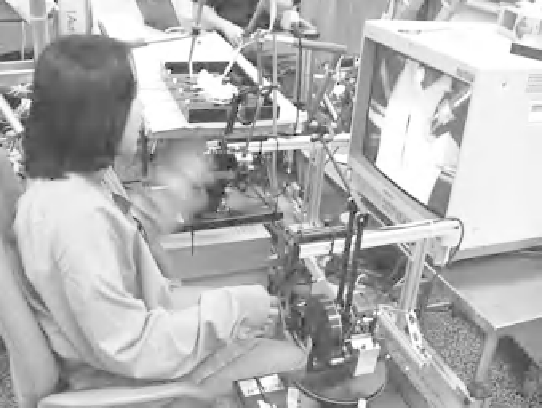Biomedical Engineering Reference
In-Depth Information
(a)
(b)
(c)
Figure 10.10
(a,b) Slave manipulator from the University of California, Berkeley and University
of California, San Francisco laparoscopic telesurgical workstation, tying a knot in the training box.
(c) Master workstation of the robotic telesurgical workstation (RTW) (See Plate 20)
The key advantages of medical robotics can be grouped into three areas. The first is
the potential of a medical robot to significantly improve the surgeons' technical capability
to perform procedures, by exploiting the complementary strengths of humans and robots.
Medical robots can now be constructed to be more precise and geometrically accurate than
an unaided human. They can operate in hostile radiological environments and can pro-
vide greater dexterity for minimally invasive procedures inside the patient's body. These
capabilities can both enhance the ability of an average surgeon to perform procedures
unassisted that otherwise only a few exceptionally gifted surgeons could perform. It also
makes it possible to perform interventions that would otherwise be completely unfeasi-
ble, such as, for example, by using the da Vinci™ (Figure 9.1) Surgical System. This
comparatively recent innovation simplifies many existing MIS and potentially expands
upon the number of other such procedures than can be performed. It makes difficult



